Capacitive Power Transfer System with Reduced Voltage Stress and Sensitivity
Abstract
:Featured Application
Abstract
1. Introduction
2. Proposed System Structure
3. Mathematical Modelling and Analysis
3.1. System Sensitivity
3.2. Voltage Stress Across the Capacitive Interface
4. Electric Field Simulation
5. Experimental Results
6. Conclusions
Author Contributions
Funding
Conflicts of Interest
References
- Tesla, N. Electrical Transformer or Induction Device. U.S. Patent No. 433,702, 5 August 1890. [Google Scholar]
- Hu, A.P. Wireless/Contactless Power Supply—Inductively Coupled Resonant Converter Solutions; VDM Verlag Dr Mueller: Saarbrücken, Germany, 2009; ISBN 978-3-639-11673-1. [Google Scholar]
- Green, A.W.; Boys, J.T. 10 kHz Inductively Coupled Power Transfer-Concept and Control. In Proceedings of the 1994 Fifth International Conference on Power Electronics and Variable-Speed Drives, London, UK, 26–28 October 1994; pp. 694–699. [Google Scholar]
- Hui, S.Y.R.; Ho, W.W.C. A new generation of universal contactless Battery Charging platform for portable Consumer Electronic equipment. IEEE Trans. Power Electron. 2005, 20, 620–627. [Google Scholar] [CrossRef]
- Covic, G.A.; Boys, J.T.; Kissin, M.L.G.; Lu, H.G. A three-phase inductive power transfer system for roadway-powered vehicles. IEEE Trans. Ind. Electron. 2007, 54, 3370–3378. [Google Scholar] [CrossRef]
- Thrimawithana, D.J.; Madawala, U.K. A Three-Phase Bi-Directional IPT System for Contactless Charging of Electric Vehicles. In Proceedings of the 2011 IEEE International Symposium on Industrial Electronics, Gdansk, Poland, 27–30 June 2011. [Google Scholar]
- Hu, A.P.; You, Y.W.; Chen, F.Y.B.; McCormick, D.; Budgett, D.M. Wireless Power Supply for ICP Devices with Hybrid Supercapacitor and Battery Storage. IEEE J. Emerg. Sel. Top. Power Electron. 2016, 4, 273–279. [Google Scholar] [CrossRef]
- Kurs, A.; Karalis, A.; Moffatt, R.; Joannopoulos, J.D.; Fisher, P.; Soljačić, M. Wireless power transfer via strongly coupled magnetic resonances. Science 2007, 317, 83–86. [Google Scholar] [CrossRef] [PubMed]
- Karalis, A.; Joannopoulos, J.D.; Soljačić, M. Efficient wireless non-radiative mid-range energy transfer. Ann. Phys. 2008, 323, 34–48. [Google Scholar] [CrossRef] [Green Version]
- Chao, L.; Hu, A.P.; Wang, B.; Nair, N.C. A Capacitively Coupled Contactless Matrix Charging Platform with Soft Switched Transformer Control. IEEE Trans. Ind. Electron. 2013, 60, 249–260. [Google Scholar] [CrossRef]
- Liu, C.; Hu, A.P. Wireless/Contactless Power Transfer-Capacitevely Coupled Solutions; LAP Lambert Academic Publishing: Saarbrucken, Germany, 2012. [Google Scholar]
- Mostafa, T.M.; Muharam, A.; Hattori, R. Wireless Battery Charging System for Drones via Capacitive Power Transfer. In Proceedings of the 2017 IEEE PELS Workshop on Emerging Technologies: Wireless Power Transfer (WoW), Chongqing, China, 20–22 May 2017; pp. 1–6. [Google Scholar]
- Liu, C.; Hu, A.P. Power Flow Control of a Capacitively Coupled Contactless Power Transfer System. In Proceedings of the 2009 35th Annual Conference of IEEE Industrial Electronics, Porto, Portugal, 3–5 November 2009; pp. 743–747. [Google Scholar]
- Huang, L.; Hu, A.P. Defining the mutual coupling of capacitive power transfer for wireless power transfer. Electron. Lett. 2015, 51, 1806–1807. [Google Scholar] [CrossRef]
- Culurciello, E.; Andreou, A.G. Capacitive Inter-Chip Data and Power Transfer for 3-D VLSI. IEEE Trans. Circuits Syst. II Expr. Briefs 2006, 53, 1348–1352. [Google Scholar] [CrossRef]
- Salzman, D.; Knight, T., Jr.; Franzon, P. Application of Capacitive Coupling to Switch Fabrics. In Proceedings of the 1995 IEEE Multi-Chip Module Conference (MCMC-95), Santa Cruz, CA, USA, 31 January–2 February 1995; pp. 195–199. [Google Scholar]
- Wang, K.; Sanders, S. Contactless USB—A Capacitive Power and Bidirectional Data Transfer System. In Proceedings of the 2014 IEEE Applied Power Electronics Conference and Exposition—APEC 2014, Fort Worth, TX, USA, 16–20 March 2014; pp. 1342–1347. [Google Scholar]
- Muharam, A.; Mostafa, T.M.; Hattori, R. Design of Power Receiving Side in Wireless Charging System for UAV Application. In Proceedings of the 2017 International Conference on Sustainable Energy Engineering and Application (ICSEEA), Jakarta, Indonesia, 23–24 October 2017; pp. 133–139. [Google Scholar]
- Hu, A.P.; Liu, C.; Li, H.L. A Novel Contactless Battery Charging System for Soccer Playing Robot. In Proceedings of the 2008 15th International Conference on Mechatronics and Machine Vision in Practice, Auckland, New Zealand, 2–4 December 2008; pp. 646–650. [Google Scholar]
- Kim, J.; Bien, F. Electric Field Coupling Technique of Wireless Power Transfer for Electric Vehicles. In Proceedings of the IEEE 2013 Tencon-Spring, Sydney, NSW, Australia, 17–19 April 2013; pp. 267–271. [Google Scholar]
- Lu, F.; Zhang, H.; Hofmann, H.; Mi, C. A Double-Sided LCLC-Compensated Capacitive Power Transfer System for Electric Vehicle Charging. IEEE Trans. Power Electron. 2015, 30, 6011–6014. [Google Scholar] [CrossRef]
- Bowick, C. Resonant Circuits. In RF Circuit Design, 2nd ed.; Elsevier/Newnes: New York, NY, USA, 2008; Chapter 2; pp. 26–28. ISBN 9780750685184. [Google Scholar]
- Theodoridis, M.P. Effective Capacitive Power Transfer. IEEE Trans. Power Electron. 2012, 27, 4906–4913. [Google Scholar] [CrossRef]
- Funato, H.; Kobayashi, H.; Kitabayashi, T. Analysis of Transfer Power of Capacitive Power Transfer System. In Proceedings of the 2013 IEEE 10th International Conference on Power Electronics and Drive Systems (PEDS), Kitakyushu, Japan, 22–25 April 2013; pp. 1015–1020. [Google Scholar]
- Kline, M.; Izyumin, I.; Boser, B.; Sanders, S. Capacitive Power Transfer for Contactless Charging. In Proceedings of the 2011 Twenty-Sixth Annual IEEE Applied Power Electronics Conference and Exposition (APEC), Fort Worth, TX, USA, 6–11 March 2011; pp. 1398–1404. [Google Scholar]
- Erickson, R.W.; Maksimovic, D. Resonant Conversion. In Fundamentals of Power Electronics, 2nd ed.; Kluwer Academic: New York, NY, USA, 2001; Chapter 19; pp. 711–713. [Google Scholar]
- Zhang, H.; Lu, F.; Hofmann, H.; Liu, W.; Mi, C. A Large Air-Gap Capacitive Power Transfer System with a 4-Plate Capacitive Coupler Structure for Electric Vehicle Charging Applications. In Proceedings of the 2016 IEEE Applied Power Electronics Conference and Exposition (APEC), Long Beach, CA, USA, 20–24 March 2016; pp. 1726–1730. [Google Scholar] [CrossRef]
- IEEE Standards Association. IEEE Standard for Safety Levels with Respect to Human Exposure to Radio Frequency Electromagnetic Fields, 3 kHz to 300 GHz; IEEE Standard C95.1; IEEE: Piscataway, NJ, USA, 2005. [Google Scholar]
- Taranovich, S. Si vs. GaN vs. SiC: Which Process and Supplier Are Best for My Power Design? EDN NETWORK. 15 March 2013 [Online]. Available online: https://www.edn.com/design/power-management/4409627/Si-vs--GaN-vs--SiC--Which-process-and-supplier-are-best-for-my-power-design- (accessed on 14 April 2018).
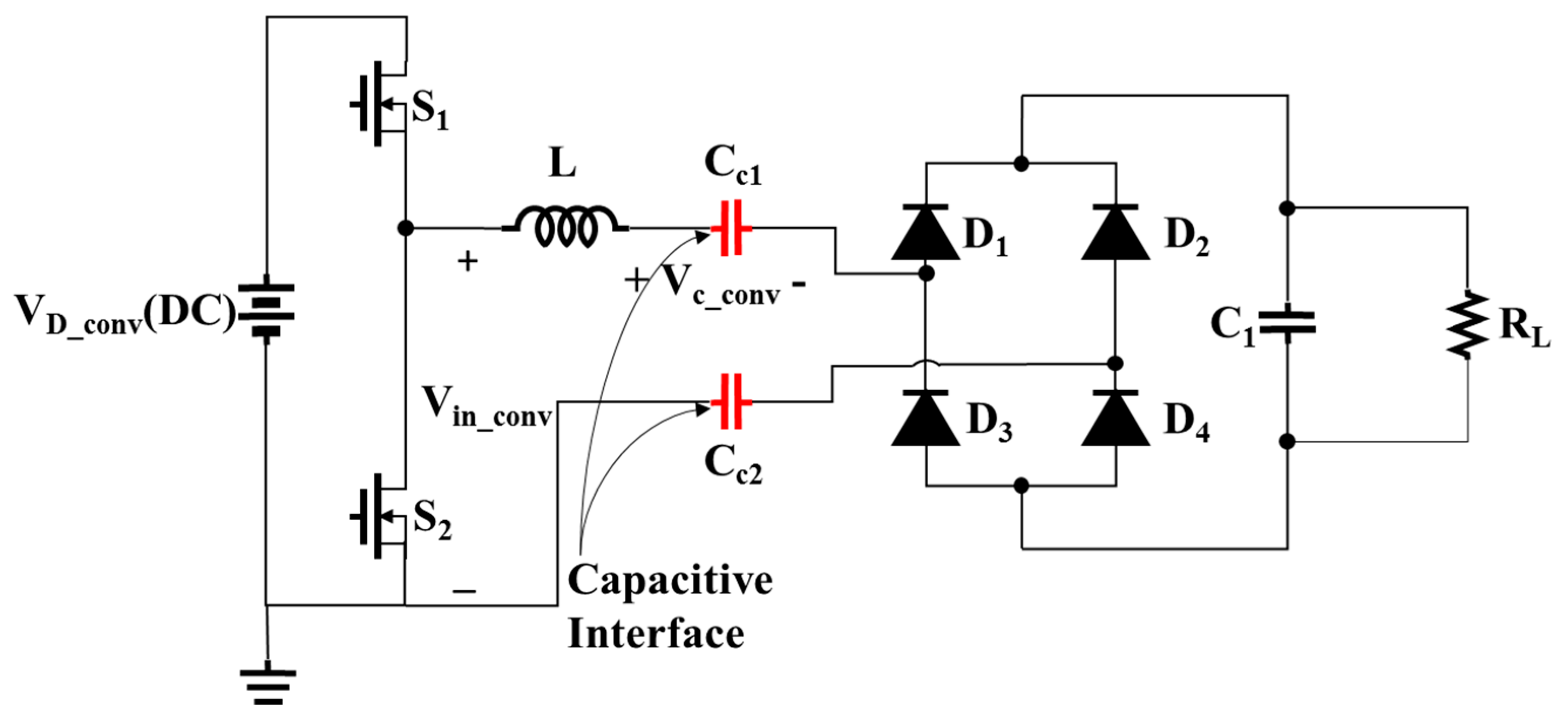
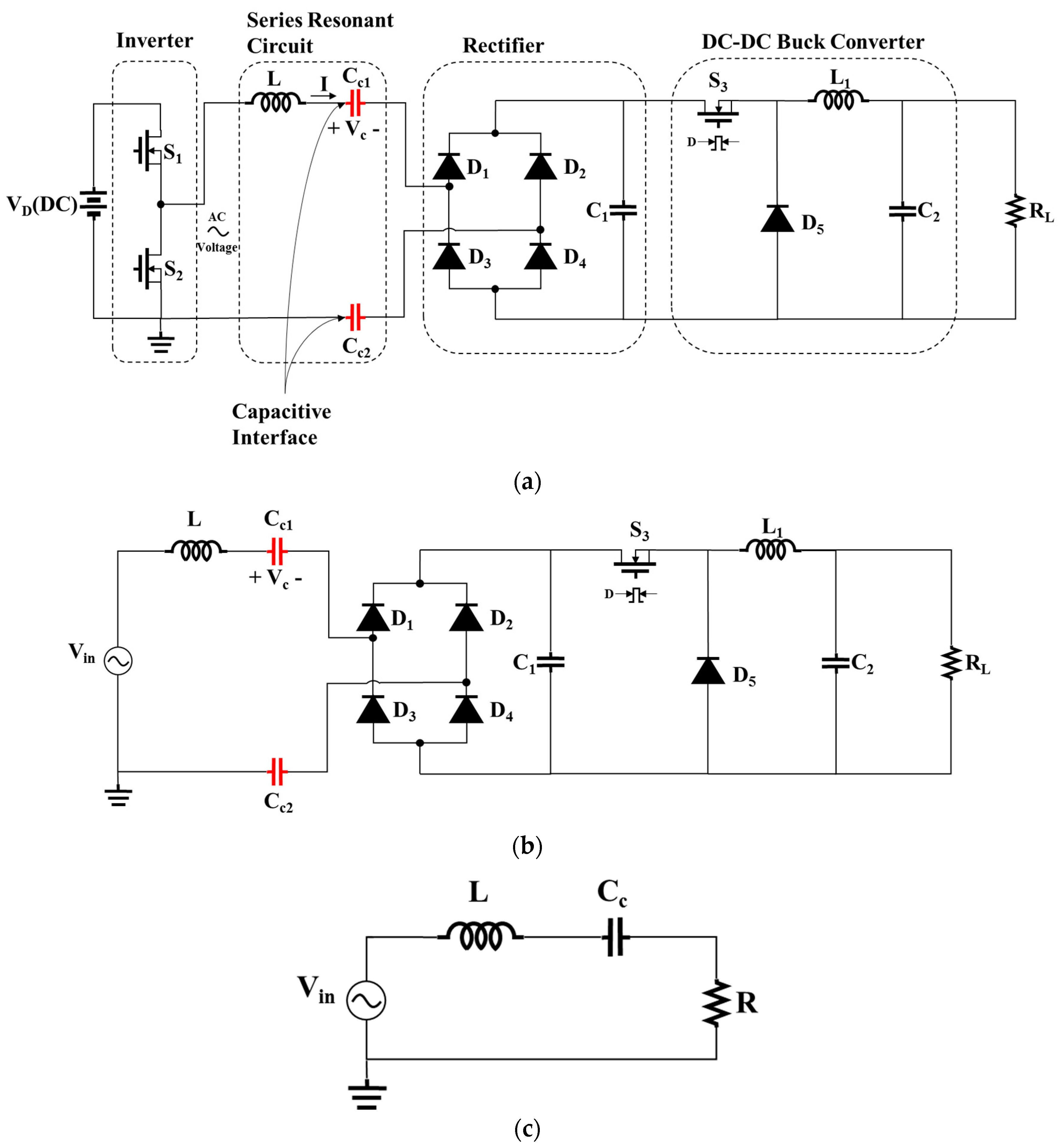

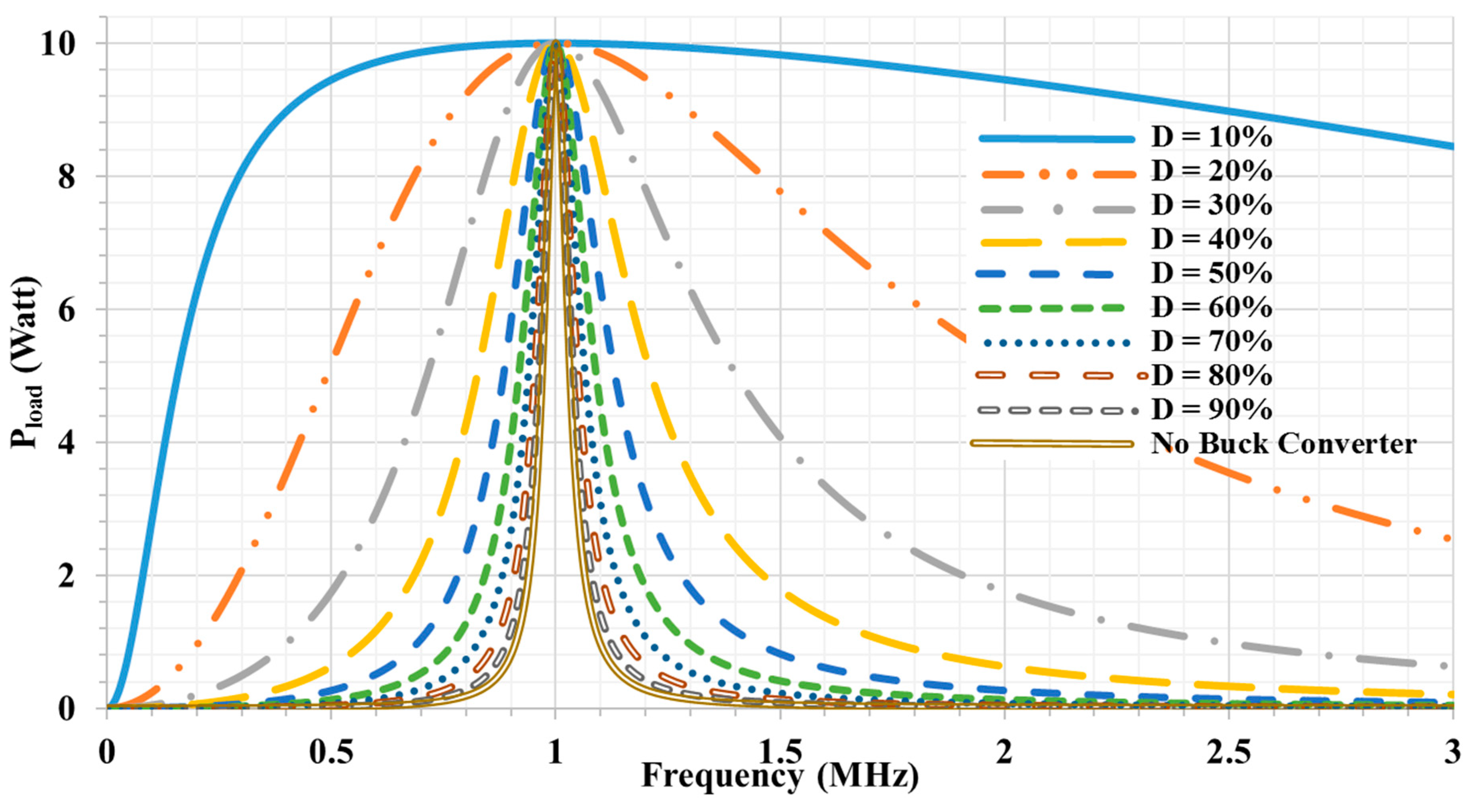
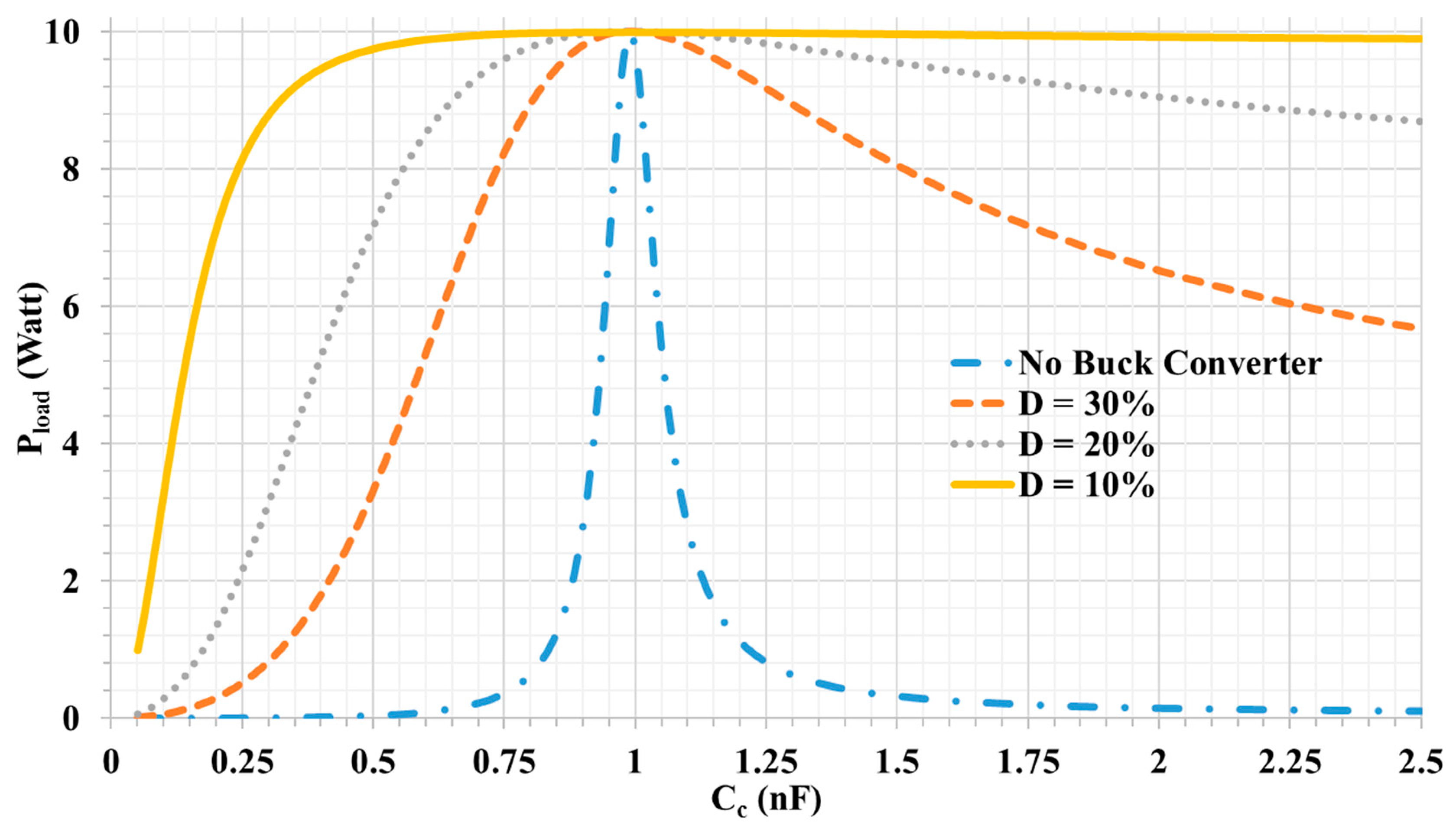
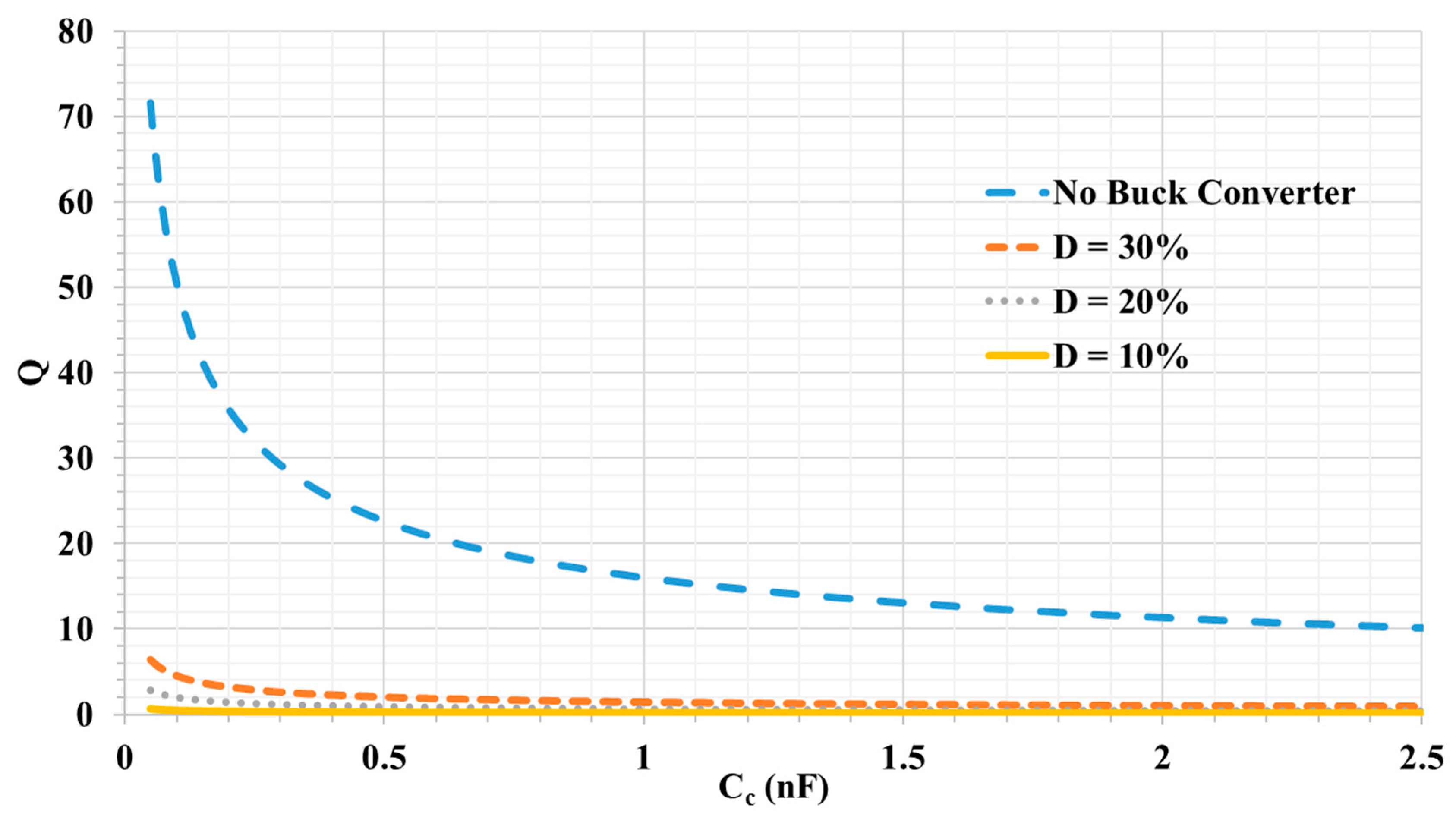

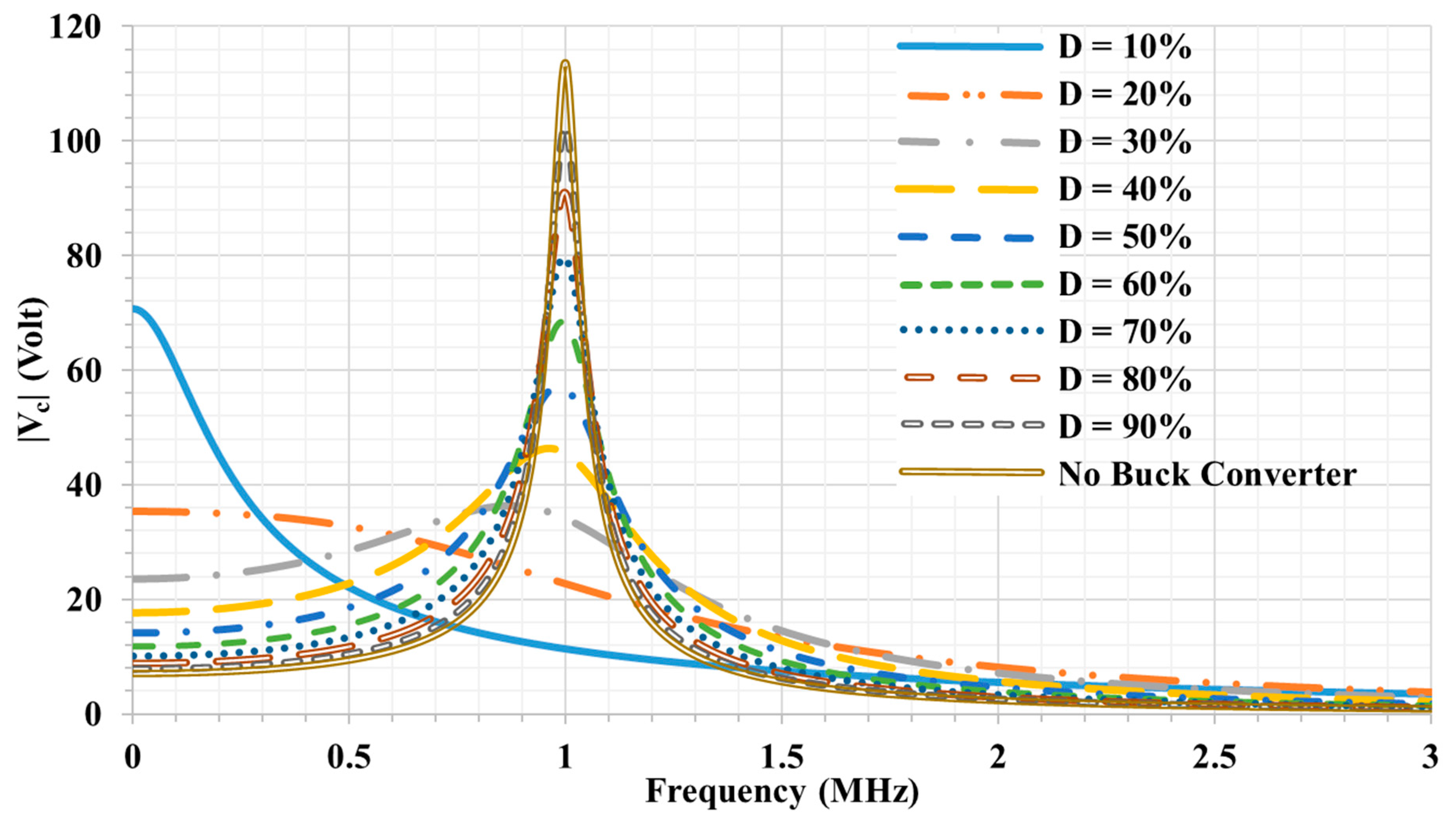


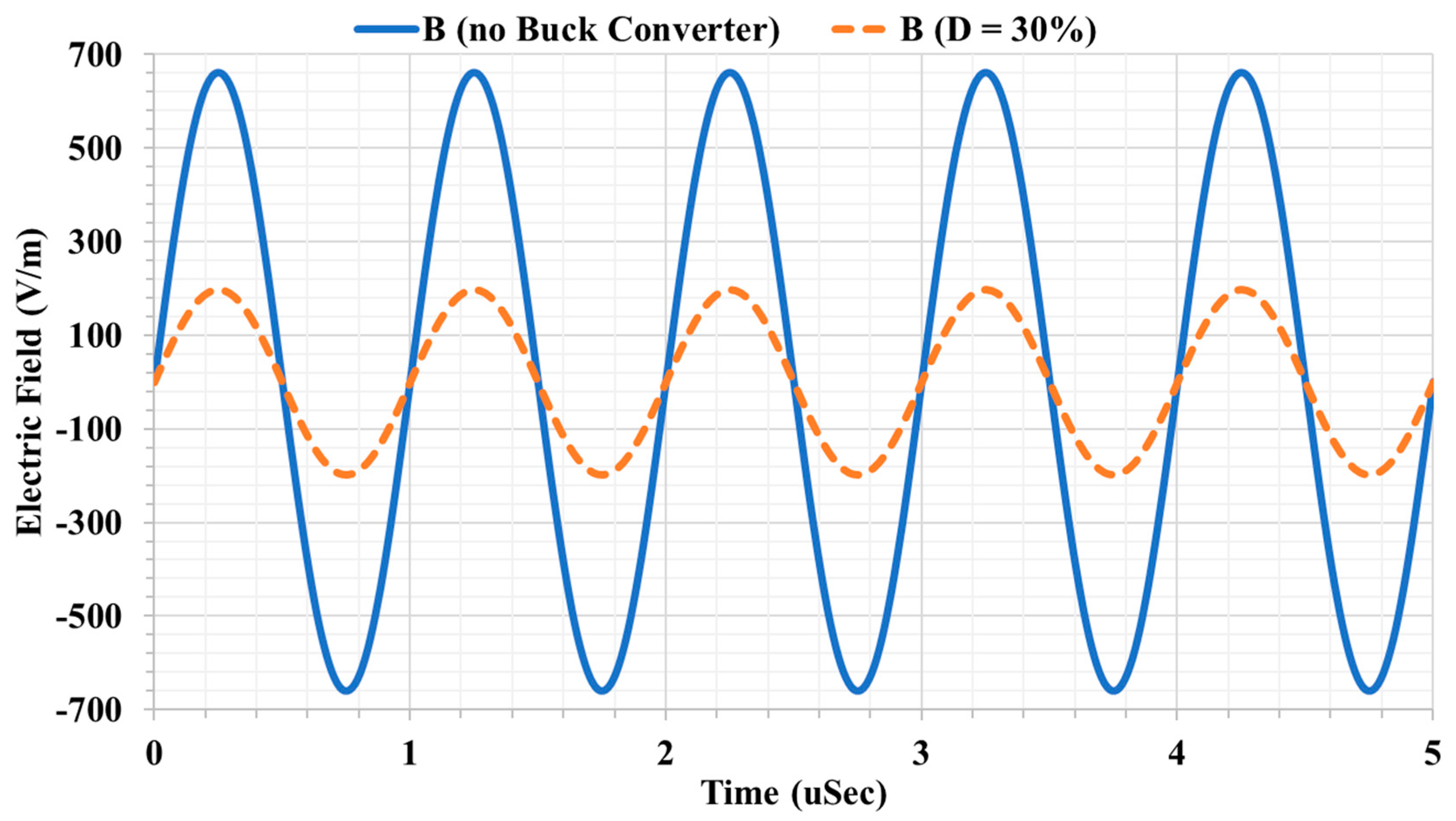

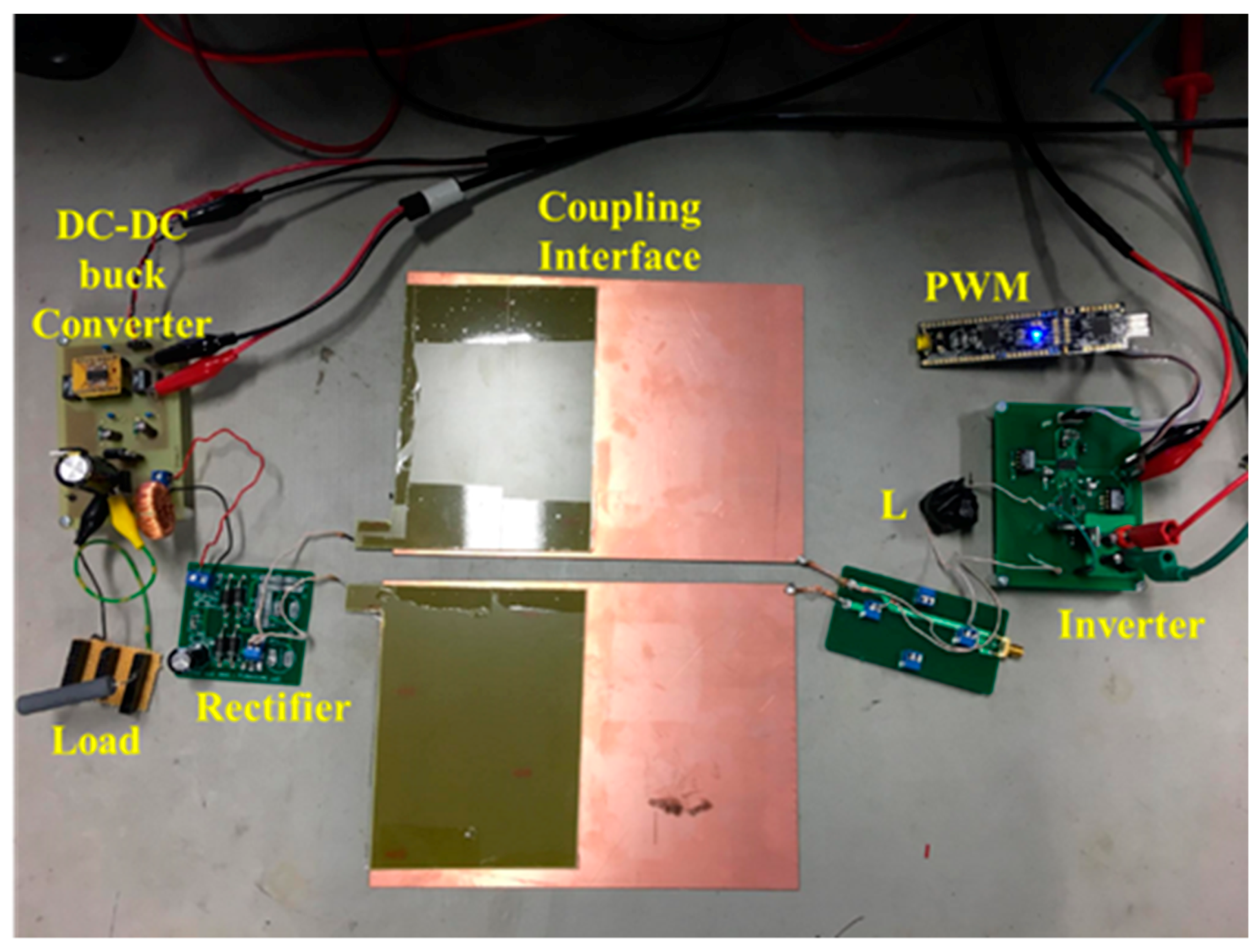
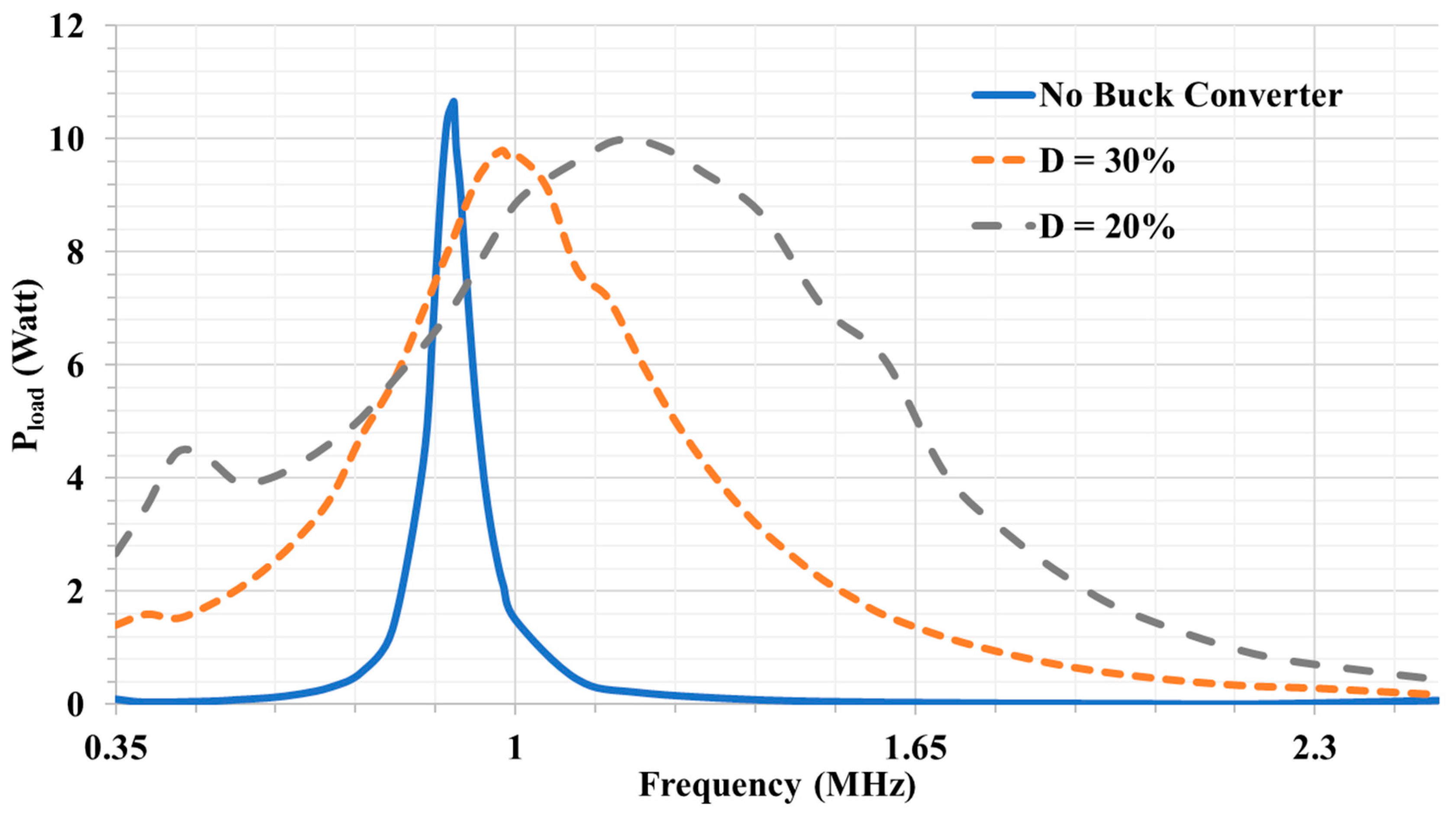
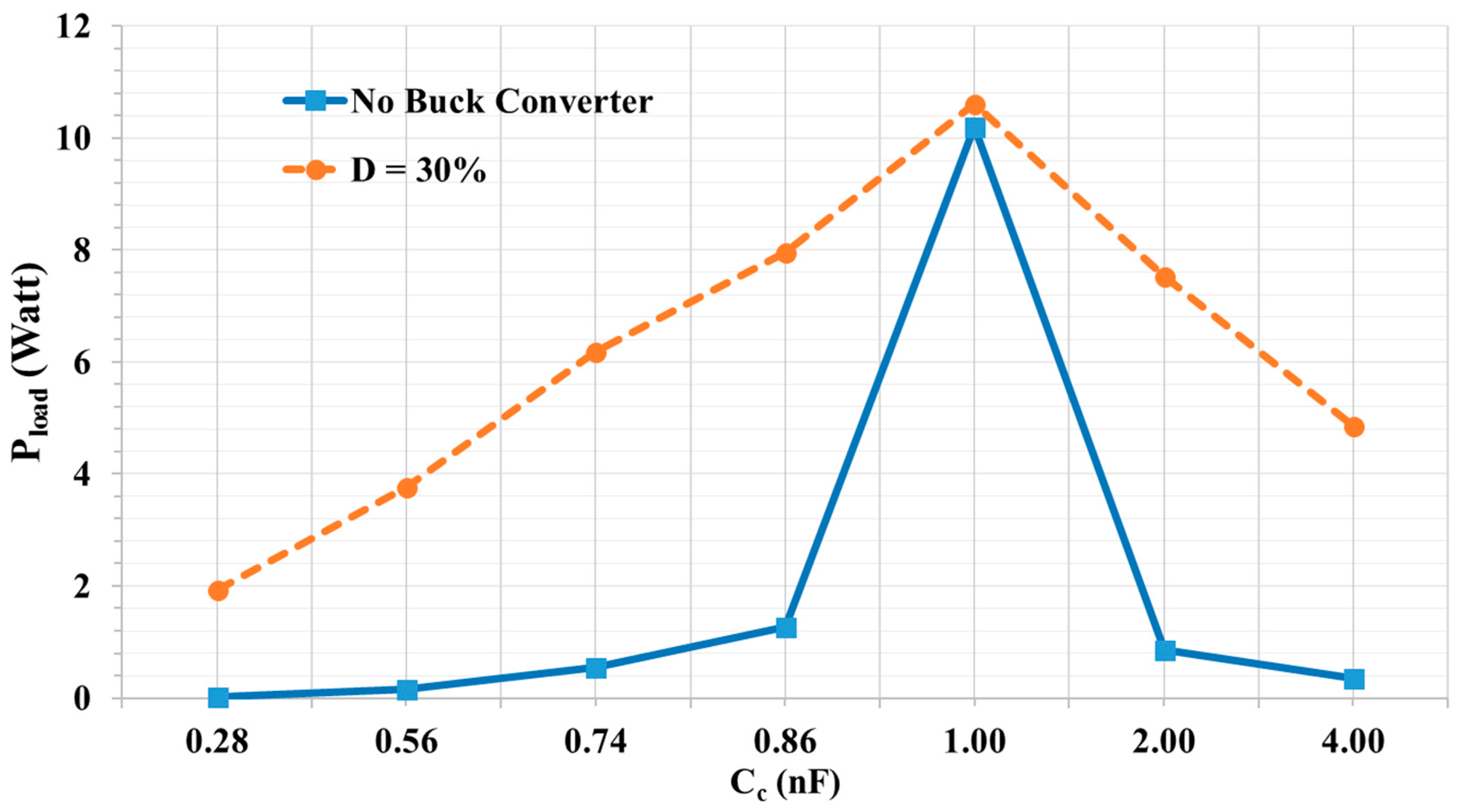


| Parameter | Unit | Value |
|---|---|---|
| Watt | 10 | |
| MHz | 1 | |
| = 2Cc | nF | 2 |
| µH | 25 | |
| Ω | 10 |
| Point | Distance to the Plates (cm) X, Y, Z |
|---|---|
| A | In the center between Tx1 and Rx1 |
| B | 2, 0, 0 (in front of Tx1 and Rx1) |
| C | 0, 0, 1 (above the center of Tx1 and Rx1) |
| D | 0, 0, 3 (above the center of Tx1 and Rx1) |
| E | 0, 0, 4 (above the center of Tx1 and Rx1) |
| Parameter | Unit | Value |
|---|---|---|
| Watt | 10 | |
| MHz | 1 | |
| nF | ~2.1 | |
| nF | ~1.9 | |
| Duty Cycle | % | 20, 30, 100 |
| µH | 25 | |
| Ω | 10 |
© 2018 by the authors. Licensee MDPI, Basel, Switzerland. This article is an open access article distributed under the terms and conditions of the Creative Commons Attribution (CC BY) license (http://creativecommons.org/licenses/by/4.0/).
Share and Cite
Mostafa, T.M.; Bui, D.; Muharam, A.; Hattori, R.; Hu, A.P. Capacitive Power Transfer System with Reduced Voltage Stress and Sensitivity. Appl. Sci. 2018, 8, 1131. https://doi.org/10.3390/app8071131
Mostafa TM, Bui D, Muharam A, Hattori R, Hu AP. Capacitive Power Transfer System with Reduced Voltage Stress and Sensitivity. Applied Sciences. 2018; 8(7):1131. https://doi.org/10.3390/app8071131
Chicago/Turabian StyleMostafa, Tarek M., Dai Bui, Aam Muharam, Reiji Hattori, and Aiguo Patrick Hu. 2018. "Capacitive Power Transfer System with Reduced Voltage Stress and Sensitivity" Applied Sciences 8, no. 7: 1131. https://doi.org/10.3390/app8071131







